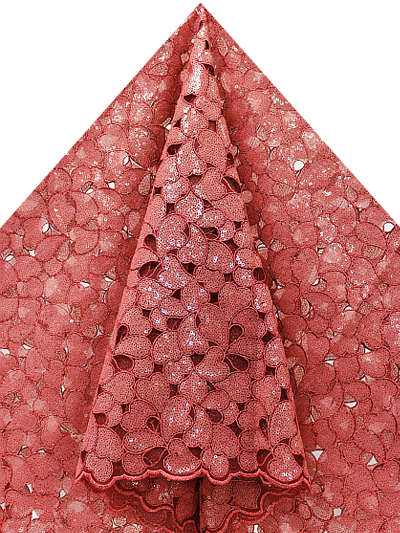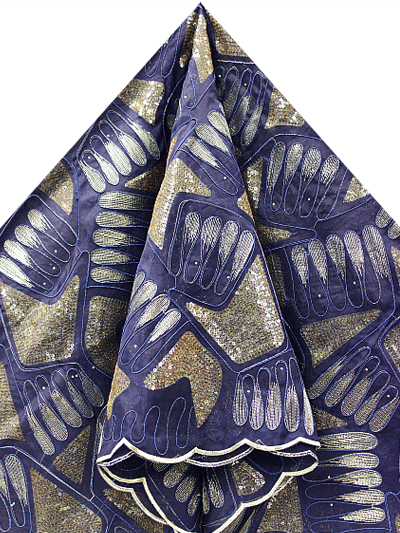At Empire Textiles, we like to make sure that our customers are in the know when it comes to African and West African fabrics, and that’s why we use our blog to offer our readers some more information about our products. So far on the blog, we’ve already covered many African fabrics and garments, including Aso Oke, wax prints, Gele, and brocade, and in this blog post we’re going to give you an introduction to one our favourite fabrics: organza lace. Let’s start by taking a look at the origins of this wonderful, revered fabric, and then move on to discussing how it is used in African cultures.
What is organza and where does it come from?
 Organza Lace is a thin weave silk fabric that is produced around the world. Although fashion historians are not sure where exactly organza fabric originated, it is commonly woven in a number of countries around the world, including China, France, Italy, India, and many West African nations.
Organza Lace is a thin weave silk fabric that is produced around the world. Although fashion historians are not sure where exactly organza fabric originated, it is commonly woven in a number of countries around the world, including China, France, Italy, India, and many West African nations.
In addition, it is an important part of many of these cultures, particularly in Bangalore in India, and in many parts of Africa. Although today many cheaper versions of organza are made with coarser fabrics or with nylon and polyester, there are still many places where organza is made using traditional materials and methods.
Organza lace in Africa
 In Africa, organza lace is used primarily in couture designs, but is also present in lots of everyday garments. It is highly respected across the continent due to the high quality of its production, and as a result it is often associated with formal wear, like wedding dresses, evening gowns, and other expensive items of clothing.
In Africa, organza lace is used primarily in couture designs, but is also present in lots of everyday garments. It is highly respected across the continent due to the high quality of its production, and as a result it is often associated with formal wear, like wedding dresses, evening gowns, and other expensive items of clothing.
African organza lace is usually embellished in great detail, with bold, intricate patterns and added detailing, like metallic sequins or diamonte studs. Some may even be adorned with leather or suede patches, to add some bolder texture to the light net lace that makes up the rest of the garment. Organza lace is available in a wide range of colours and styles, and the bold patterns and bright colour combinations are in keeping with traditional African fashion.

